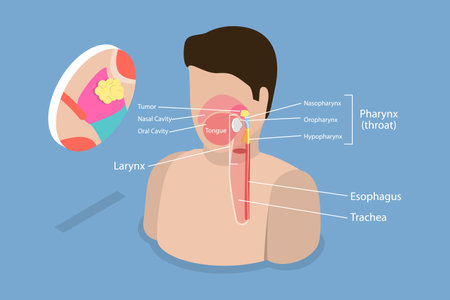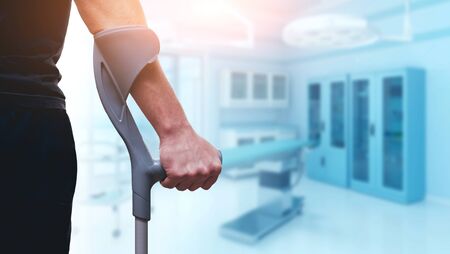Introduction: Hip Fractures among the British Elderly
Across the United Kingdom, hip fractures are a significant concern among older adults, affecting thousands of families each year. As the population ages, the incidence of hip fractures has become increasingly common, with statistics showing that nearly 70,000 people suffer from this injury annually in England, Wales, and Northern Ireland alone. Most frequently occurring after a fall, hip fractures can have far-reaching consequences for the health and independence of elderly individuals. The recovery journey is rarely straightforward; it often involves not just physical healing but also emotional adjustment and changes in daily living.
The impact of a hip fracture extends well beyond the initial hospital stay. For many older adults, it marks a turning point—sometimes threatening their ability to remain at home or maintain previous levels of activity. The NHS and social care systems strive to support these individuals through integrated rehabilitation services, yet challenges such as delayed recovery, risk of complications, and feelings of isolation remain ever-present. Within this context, understanding real-life experiences becomes crucial. By sharing case studies and personal stories from across Britain, we aim to shed light on both the struggles and triumphs that define the path to recovery after a hip fracture. These accounts offer valuable insight into the resilience of our elderly population and highlight the importance of compassionate support during every stage of healing.
2. The NHS Journey: Medical Care and Support
For many older adults in the UK, experiencing a hip fracture often marks the beginning of a significant journey through the National Health Service (NHS). This pathway is carefully designed to ensure not only medical treatment but also holistic support and community rehabilitation, tailored to the unique needs of the British elderly population.
Hospital Admission and Acute Care
Upon arrival at hospital—frequently via ambulance after a fall—patients are swiftly assessed by a multidisciplinary team. The NHS places emphasis on prompt surgical intervention, ideally within 36 hours, which has been shown to reduce complications and improve outcomes. During this time, patients and their families are kept informed about each step, with staff offering gentle reassurance and practical guidance.
Stages of Hip Fracture Care in the NHS
| Stage | Main Focus | NHS Approach |
|---|---|---|
| Admission & Assessment | Pain management, diagnosis, pre-op preparation | Multidisciplinary review; patient-centred communication |
| Surgery | Hip repair or replacement | Timely intervention within 36 hours; anaesthetic choices discussed with patient/family |
| Post-Operative Care | Preventing complications, early mobilisation | Physiotherapy starts within 24 hours; regular monitoring for delirium or infection |
| Discharge Planning | Safe transition home or to intermediate care | Involvement of family/carers; assessment of home environment; clear follow-up plans |
| Community Rehabilitation | Continued recovery, regaining independence | NHS-funded physiotherapy at home or local centres; support from community nurses and social workers |
The Role of Community Services in Recovery
A defining aspect of the NHS journey is the seamless link between hospital care and community-based services. Once medically stable, patients may be discharged to their own homes or a short-term rehabilitation facility. Here, British values of dignity and independence are prioritised: home adaptations may be arranged, meals-on-wheels provided, and local authority carers engaged where needed.
A Collaborative Approach: Family Involvement and Social Support
The British approach recognises the importance of family involvement throughout recovery. Discharge planning meetings routinely include relatives, who are supported with information about caring for someone post-hip fracture. Community teams continue this gentle partnership after discharge, ensuring no one faces recovery alone.

3. Living Through Recovery: Personal Experiences
Every individual’s journey through hip fracture recovery is unique, yet there are common threads that tie these stories together across the British elderly community. Listening to first-hand accounts offers invaluable insight into both the emotional and physical realities faced during this challenging period.
Emotional Ups and Downs
Many older Britons describe an initial sense of shock and uncertainty immediately following their injury. For some, like Mrs. Thompson from Yorkshire, the fear of losing independence was overwhelming. She recalls, “I worried about being a burden on my family, not knowing if I’d ever walk unaided again.” Such anxieties are common, but support from family members and compassionate NHS staff often helps ease these feelings over time.
Physical Challenges and Breakthroughs
The physical journey is marked by daily effort and perseverance. Mr. Evans from Cardiff shares how even sitting up in bed felt insurmountable in the early days post-surgery. Gradually, with physiotherapy sessions and encouragement from his care team, he managed small milestones—taking his first steps with a walking frame was a proud moment he still remembers fondly. These achievements, while seemingly modest, represent enormous progress for those recovering from hip fractures.
Daily Routines and Adaptations
Adapting to new routines forms a vital part of recovery. Many elderly Britons highlight the importance of maintaining a schedule—regular exercises prescribed by physiotherapists, balanced meals prepared with the help of carers or relatives, and scheduled rest periods to avoid fatigue. Mrs. Patel from Manchester notes how her morning stretches became a ritual that helped her regain confidence in her mobility.
Celebrating Small Victories
Throughout these personal stories, one common theme emerges: celebrating small victories is crucial for motivation and self-esteem. Whether it’s managing to climb a single stair or making a cup of tea independently, each step forward brings renewed hope. These milestones not only mark physical improvement but also reinforce the resilience and determination within the British elderly population facing hip fracture recovery.
4. Family and Community: A Source of Strength
Recovery from a hip fracture in later life is rarely a solitary journey. In the UK, the presence of family members, dedicated carers, and supportive community groups often provides an invaluable lifeline for elderly individuals facing the challenges of rehabilitation. The culture of compassion and practical assistance that characterises British communities cannot be underestimated in its positive impact on recovery outcomes.
The Pivotal Role of Family
For many older adults, close family members serve as both emotional anchors and hands-on helpers. Whether it’s adult children arranging transportation to physiotherapy appointments, grandchildren offering companionship, or spouses assisting with daily routines, the involvement of loved ones fosters hope and resilience. Personal stories often reveal that these small but consistent acts of kindness encourage patients to persevere through discomfort and uncertainty.
Carers: Professional and Informal Support
Across Britain, carers—both professional and informal—are a cornerstone of hip fracture recovery. While some families opt for home care services, others rely on trusted neighbours or friends to share the load. The collaborative approach often seen in British towns and villages ensures that no one is left feeling isolated during their recovery period.
| Support Type | Examples from UK Case Studies | Impact on Recovery |
|---|---|---|
| Family Involvement | Meal preparation, medication reminders, emotional encouragement | Improved morale, better adherence to rehab plans |
| Professional Carers | Assistance with personal care, mobility exercises, medical checks | Enhanced safety, faster physical progress |
| Community Groups | Coffee mornings, transport schemes, befriending services | Reduced loneliness, greater engagement with recovery activities |
The Local Community’s Embrace
Many British case studies highlight the crucial role played by local organisations—be it a church group organising meal deliveries or a village hall hosting gentle exercise classes tailored for those recovering from fractures. These initiatives not only offer practical support but also restore a sense of belonging that is essential for mental wellbeing during what can otherwise be an isolating experience.
Together, family networks, carers, and vibrant community groups create a web of support that underpins successful recovery. This uniquely British tapestry of care ensures that elderly individuals are empowered not just to heal physically but also to maintain dignity and joy throughout their journey.
5. Barriers and Breakthroughs: Overcoming Setbacks
Recovering from a hip fracture is rarely a straightforward journey, especially among the elderly in the UK. Many older adults face significant barriers that can feel overwhelming at times. One common challenge is mobility. After surgery, regaining confidence on one’s feet takes time, and fears of falling again are very real. Mrs. Clarke, an 83-year-old from Kent, shared how she struggled to walk across her living room at first. The presence of uneven carpets and narrow doorways in her Victorian home made every step a test of courage and balance.
Loneliness also casts a long shadow over recovery. For many British seniors, family may live far away or be busy with their own lives, and friends might not be as mobile as before. Mr. Patel from Manchester explained how the silence in his flat became almost unbearable after his discharge from hospital. He missed the everyday chatter and company he once took for granted, which impacted his motivation to complete physiotherapy exercises.
Adapting the home environment is another hurdle often underestimated. Traditional British homes, with their steep staircases and tight spaces, can pose risks for those with reduced mobility. Installing grab rails, decluttering walkways, and arranging for a bedroom downstairs were solutions that made a tangible difference for some individuals. However, not everyone knows where to turn for advice or financial support when these changes are needed.
Personalised Support: Stories of Success
Despite these barriers, there are inspiring stories of breakthroughs where tailored support has transformed recovery journeys. When Mrs. Clarke’s local council occupational therapist visited her home, together they mapped out practical changes—securing rugs, fitting handrails, and rearranging furniture—that enabled her to move safely and regain independence.
The Power of Community Initiatives
In some towns and villages, community groups have stepped up to provide companionship for those recovering alone. Mr. Patel was matched with a volunteer befriender who visited weekly for tea and conversation. These visits lifted his spirits and encouraged him to stick with his exercise routine.
A Collaborative Approach
Ultimately, overcoming setbacks after a hip fracture often comes down to teamwork—between healthcare professionals, local authorities, families, and neighbours. By recognising each person’s unique needs and responding with empathy and practical help, it’s possible to turn daunting obstacles into manageable steps towards recovery.
6. Long-term Outlook: Rebuilding Independence
For many older adults in Britain who have experienced a hip fracture, the journey does not end once the immediate physical wounds have healed. Instead, it is a gradual process of regaining confidence, rebuilding independence, and re-establishing routines that bring meaning and joy to daily life.
Regaining Confidence After Hip Fracture
The emotional impact of a hip fracture can be just as significant as the physical challenges. Many individuals share stories of initial fear and hesitation—worries about falling again, concerns about being a burden, or doubts about their ability to manage daily tasks. In these moments, gentle encouragement from family, carers, and health professionals plays a crucial role. Small milestones—such as walking unaided to the kitchen or venturing outdoors for the first time post-injury—are celebrated as victories, gradually restoring self-assurance and autonomy.
Ongoing Therapy and Adaptations
Long-term recovery often involves continued physiotherapy and occupational therapy well beyond the hospital stay. British case studies highlight the value of tailored exercise programmes delivered by local NHS teams or community centres, focusing on strength, balance, and flexibility. Home adaptations—such as grab rails, raised toilet seats, or stairlifts—are commonly recommended to support safe mobility. Access to these services through the NHS or local authorities ensures individuals are not left to manage alone.
The Importance of Social Engagement
Isolation can be a hidden risk during recovery. Many personal stories emphasise how vital it is to remain connected with friends, neighbours, and local groups. Attending tea afternoons at community centres, joining gentle exercise classes like chair yoga, or participating in charity shops as volunteers provides purpose and companionship. These activities help stave off loneliness and keep spirits high while also encouraging regular movement.
Sustained Support Systems for Well-being
A strong support system makes all the difference in long-term outcomes. In the UK context, this often means relying on a combination of family members, social care services, local charities such as Age UK, and dedicated district nurses. Regular check-ins—whether in person or over the phone—offer reassurance and practical help when needed. The shared wisdom within families and communities also empowers older adults to find creative solutions together.
A Gentle Path Forward
Ultimately, every journey of recovery is unique. What shines through in British case studies and personal accounts is the resilience of older adults when surrounded by patient guidance and sustained encouragement. By focusing on confidence-building, ongoing therapy, social engagement, and robust support networks, elderly people can look forward to reclaiming their independence and enjoying life after hip fracture with dignity and hope.
7. Advice from Those Whove Been There
When it comes to recovering from a hip fracture, there is nothing quite as reassuring as hearing from those who have already walked this challenging path. In the words of many British elderly individuals who have experienced both the setbacks and successes of hip fracture recovery, the journey is one of patience, adaptation, and hope. Here, we share practical tips and gentle wisdom from peers who offer their voices of encouragement to others just beginning their recovery.
Take Recovery at Your Own Pace
Many emphasise that every person’s journey is unique. “Don’t compare yourself to anyone else,” advises Mrs. Green from Surrey, who fractured her hip at 82. She recommends celebrating small milestones and being patient with your body as it heals.
Stay Connected
Isolation can be tough during recovery. Several participants stress the importance of staying connected with family, friends, or local community groups. Mr. Patel from Birmingham suggests joining local support groups or using video calls to keep spirits up. “Even a quick chat with a neighbour can brighten your day,” he says.
Embrace Professional Support
Accepting help from physiotherapists, occupational therapists, and carers was a turning point for many. “The NHS team were brilliant,” recalls Mrs. Davies in Manchester. “Trust their advice and don’t be afraid to ask questions.” Seeking clarity about exercises and daily routines can make a big difference in regaining independence.
Adapt Your Home Environment
Making small adjustments around the home was frequently mentioned: installing grab rails, using non-slip mats, and rearranging living spaces for easier access all help promote safety and confidence.
Nourish Body and Mind
A balanced diet and keeping the mind engaged are key. Mr. Thompson from Devon highlights enjoying classic British puzzles or crosswords alongside healthy meals: “It kept my mind sharp while my body healed.”
Allow Yourself to Rest
Finally, many share that rest is not only allowed but essential. Listen to your body’s signals and don’t feel guilty for taking things easy on tougher days.
The voices of those who have been through hip fracture recovery remind us that healing happens not just physically but also emotionally. With patience, community support, professional guidance, and kindness towards oneself, brighter days are ahead.


